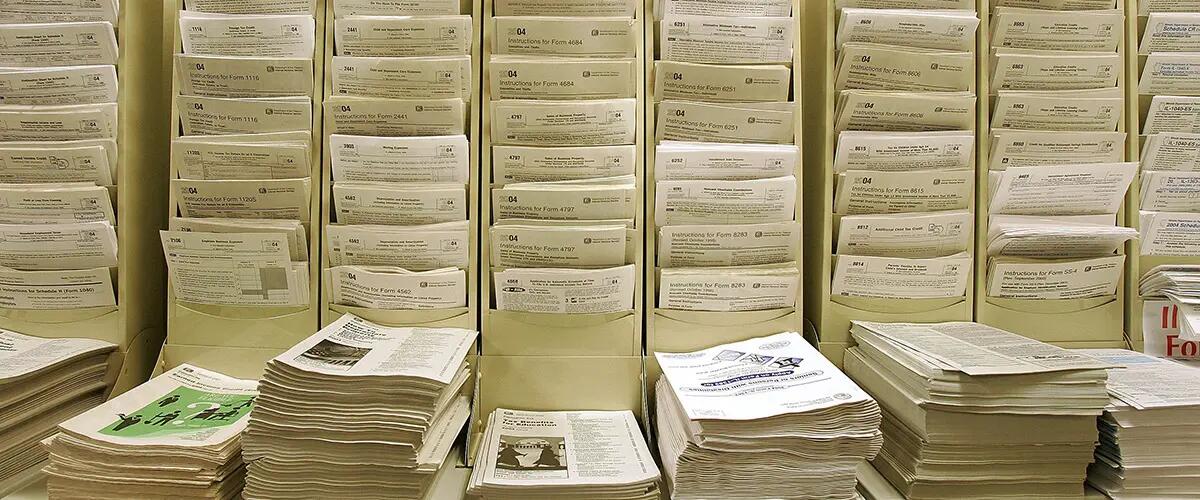
Photo Credit: Getty Images
Thought Leadership: The multibillion dollar question the IRS should be asking taxpayers
This opinion piece was originally published by The Hill. It was written by Rutgers Business School professor Jay Soled and James Alm, professor of economics at Tulane University.
With tax season once again upon us and the IRS starved for resources, our nation faces a tax compliance crisis: This year, and the foreseeable future, a growing number of taxpayers may shirk their civic duties by not paying their legally due taxes.
This outcome costs the federal government much-needed revenues. To combat this, the IRS should employ whatever tools are at its disposal to foster greater tax compliance. Standard deterrence theory avers that increasing the audit rate and imposing stiffer penalties would foster greater tax compliance. There are political headwinds, however, that strongly suggest that these approaches are not currently viable.
There is nevertheless a low-cost method that could possibly yield billions of additional tax revenue without raising taxes. It boils down to posing two simple questions that should appear on the face of every tax return: In the current year, exactly how much business-related cash or cash equivalents (e.g., checks made out to cash, Venmo or PayPal payments, or cryptocurrency payments) did you receive, and in the current year, exactly how much of the business-related cash or cash equivalents that you received did you deposit in financial institutions, retain in Venmo or PayPal accounts, or hold in (or convert into) cryptocurrency?
A simple example demonstrates the utility of asking these two questions. Suppose Mr. Smith, a handyman who accepts Venmo, earned $20,000 painting homes and making minor plumbing repairs. He considers these payments to be tax-free gratuities and, in prior years, has never reported them. Yet, if he had to answer direct questions on his Form 1040 regarding the receipt of these payments, he would have to think long and hard before he fraudulently responds.
In a nutshell, asking these two questions has a single goal in mind. It would help minimize the information asymmetry that traditionally persists between taxpayers and the IRS and that constitutes the main catalyst behind most taxpayer cheating. Requiring taxpayers to convey how much cash and cash equivalents they received and thereafter deposited, retained, or held would provide a strategic vantage point to the IRS, enabling the agency during subsequent audits to determine whether taxpayers were forthcoming in their reporting practices.
The capacity of these two questions to collect billions of dollars of additional tax revenue is not Pollyannaish. Certain facts are uncontroverted. First, among all taxpayers, small businesses have the most dismal tax compliance record, with their voluntary compliance hovering around 50 percent, largely attributable to income misreporting. Second, compelling social science research reveals that acts of omission (such as failing to report cash receipts or cash equivalents) stemming from selective oversight, are far easier mentally to perpetrate and to justify than acts of commission (such as affirmatively reporting fictitious business expense deductions), which constitute lying and which are cognitively draining.
Armed with the knowledge that there is a vast non-compliance tax problem at hand and the revelations supplied by social science research, asking the “right questions” can prove transformative.
Think otherwise? Consider what happened in 1988 when the IRS began requesting taxpayers to report their dependents’ social security numbers in order to claim a tax deduction (or, in tax jargon, a personal exemption). Suddenly, 7 million fictitious children disappeared from the tax rolls, at the time allowing the federal government to collect over $3 billion additional tax dollars annually. And this example is not unique. There is a long history of IRS strategic question use that has led to the collection of billions of dollars in additional tax revenue.
As the nation’s annual tax gap — the difference between what taxpayers owe and what they actually pay — hovers in the half-trillion-dollar range, something must be done. Accordingly, the IRS should act expediently to institute this proposed reform. And, in addition to the two recommended questions that the IRS should put on every tax return, there are likely to be other questions that the agency should consider raising as well.
Long ago, philosophers recognized the power that well-framed questions embody. Utilizing this same logic, the IRS should not forfeit the opportunity to tap into this proven strategy. Billions of dollars of needed and readily collectible tax revenue that's properly due and owing await. All without resorting to the political difficulty of changing a single word in the tax code.
Jay Soled is a professor of accounting and director of the Master of Accountancy in Taxation at Rutgers Business School. James Alm is a professor and chair of the Economics Department at Tulane University.
Press: For all media inquiries see our Media Kit


